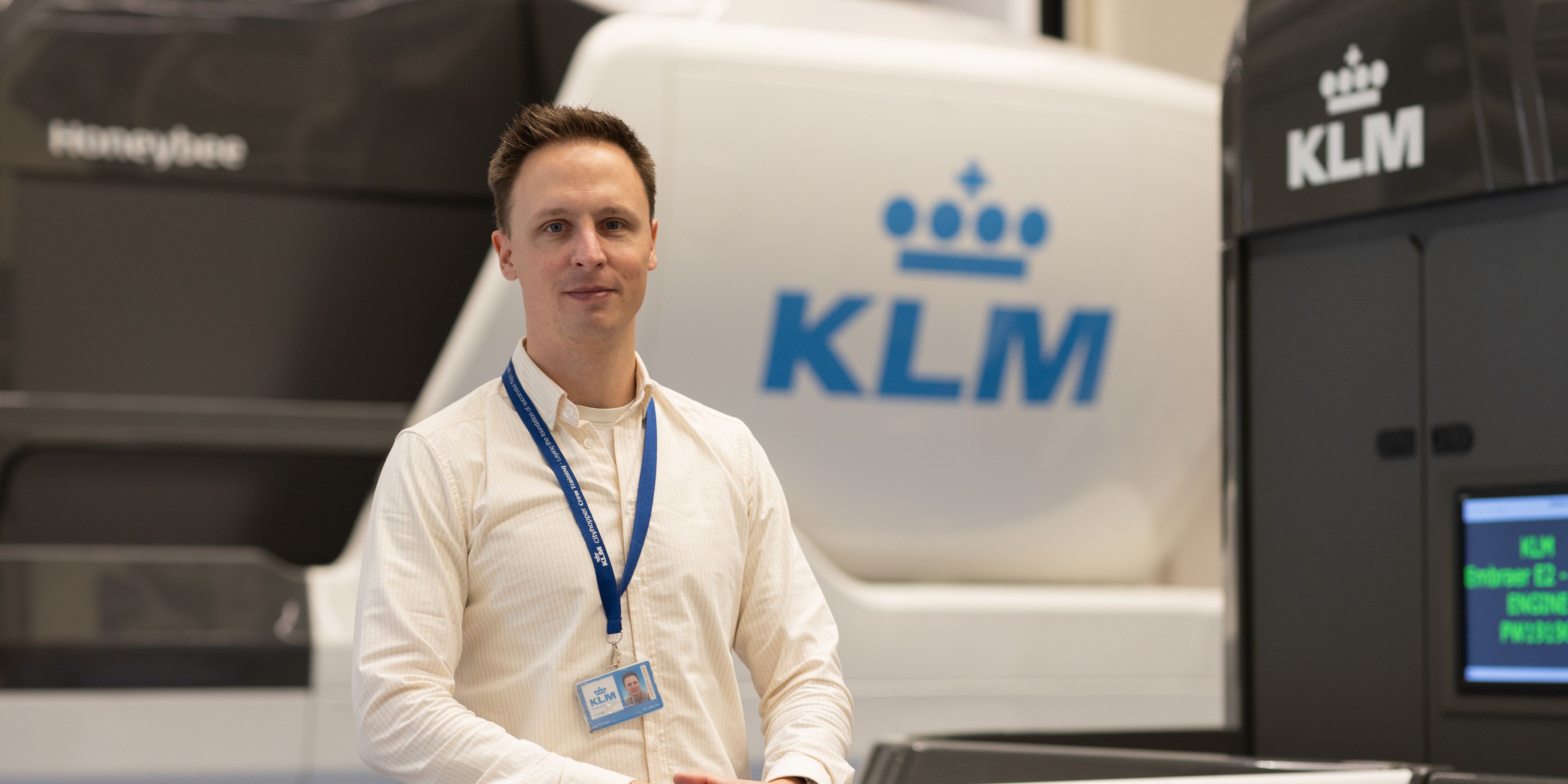Tripplanner
At Schiphol Airport you'll see a lot of KLM blue. But did you know that an entire blue world is also operating behind the scenes of KLM? In the 'Great Work!' series, we show you the projects and places where KLM's less visible work takes place. This time we talk to decision support consultant Wieberen . About TripPlanner – the system behind our ticket prices.
Tell us, what is TripPlanner all about?
‘TripPlanner is the internal IT system behind KLM.com's price tooling. Are you looking for a flight from Amsterdam to Barcelona? Then the price information you see online comes from TripPlanner. All data on pricing, network and seat availability comes together here and generates price information for the customer.’
What impact does this system have on KLM operations?
'This system has made us much quicker and more flexible in supplying price information than before. We supply price information to a large number of our online sales channels, such as the Air-France or KLM website, NDC, metasearch parties such as SkyScanner and Kayak, but also for advertisements on Google and campaign pages, for example; Our system processes millions and millions of requests every day. This means it’s very important that the response times of our system are good and the price calculation correct!'
This system has made us much quicker and more flexible in supplying price information than before. We supply price information to a large number of our online sales channels, such as the Air-France or KLM website, NDC, metasearch parties such as SkyScanner and Kayak, but also for advertisements on Google and campaign pages, for example; Our system processes millions and millions of requests every day. This means it’s very important that the response times of our system are good and the price calculation correct!Wieberen, consultant decision support
What technology do you use in your approach?
'Our applications are made with the C++/C# programming languages and run on Windows servers. We use MongoDB as a cache for storing part of the price information; this ensures faster response times. Incredibly important for us! And real time messaging takes care of seat availability updates.'
Are there other areas where this tool is also useful?
'Data is key. So departments also like to use our data internally; for example, to make price comparisons with the competition. Or, based on TripPlanner data, we can determine – together with the Network department – which partner flight will receive a so-called 'codeshare' code. This enables us to make the best possible selection of flights at the 'back end', and the customer to have the best possible (onward) connection. We’ve also noticed that we can make even better use of the data from the tooling, for example, by using information from other search engines; which routes customers are looking for and if we have these routes available in our network?'
Did this solution lead to any unintended effects?
'It has led to the realization that our system is a heavy user of the servers. Due to the enormous number of requests per day and the many (batch) processes, we currently use over a hundred servers. This a big deal for our sustainability. That’s why we’re now investigating whether we can set up green KPI’s for ourselves and, for example, move part of the application to the cloud. That is more dynamic, more flexible and more sustainable!'


